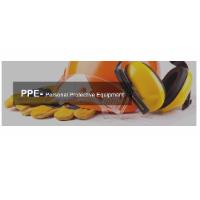 Add My Company
Add My Company
Sign In
What is Personal Protective Equipment (PPE)?
01-11-2016

PPE is defined in the Personal Protective Equipment at Work Regulations as:
All equipment (including clothing affording protection against the weather) which is intended to be worn or held by a person at work which protects them against one or more risks to their health and safety.
PPE includes equipment such as safety footwear, hard hats, high visibility waistcoats, goggles, life jackets, respirators and safety harnesses.
Waterproof, weatherproof, or insulated clothing is subject to the Regulations only if its use is necessary to protect employees against adverse climatic conditions that could otherwise affect their health and safety.
Legal duties and obligations around PPE
The Personal Protective Equipment at Work Regulations 1992 These regulations seeks to ensure that where the risks cannot be controlled by other means, Personal Protective Equipment (PPE) is correctly selected and used.
The Regulations do not apply where requirements are detailed in other regulations e.g. respirators in the Control of Substances Hazardous to Health Regulations (COSHH).
Who should pay for PPE?
Under the general requirements of The Health and Safety at Work Act 1974, employees cannot be charged or be expected to contribute for the provision or maintenance of PPE.
If items of Personal Protective Equipment are required they must be provided free of charge by the employer.
When to use PPE
PPE must always be regarded as a ‘last resort’ to protect against risks to safety and health. Engineering controls and safe systems of work must always be considered first.
For example, it may be possible to do the job using methods that will not require the use of PPE.
If this is not possible, more effective safeguards should be put in place. For example, fixed screens could be provided rather than individual eye protection.
Assessing and choosing PPE
The need for PPE must be identified through Risk Assessment.
For example, a Control of Substances Hazardous to Health (COSHH) risk assessment may show that gloves are required when using the substance being assessed. As with all risk assessments, those carrying them out must be competent to do so.
For more information on What is Personal Protective Equipment (PPE)? talk to Safety Services Direct Ltd
Enquire Now
List your company on FindTheNeedle.

